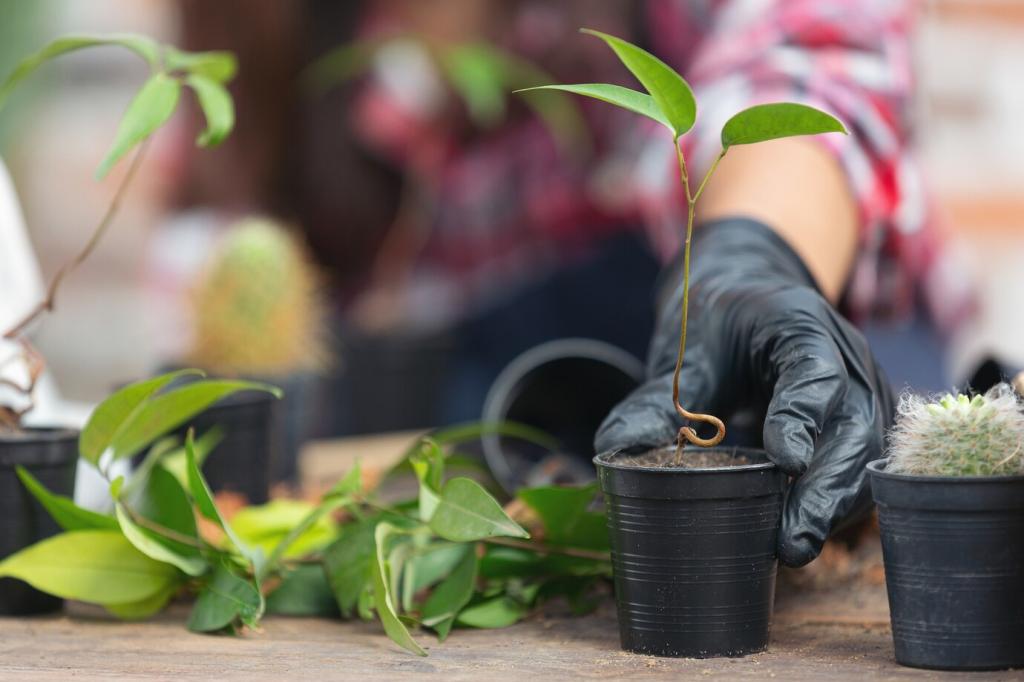Tips for Arranging Indoor Plants in Small Rooms
Utilizing Vertical Space
Wall-mounted plant holders are an ideal solution for small rooms where flat surfaces are at a premium. These fixtures can be easily installed on any sturdy wall, letting you create a vertical garden in spaces such as above a couch or near a window. Wall holders come in a variety of shapes and materials, allowing you to match your room’s aesthetic whether you prefer modern minimalism or rustic charm. By clustering a few complimentary plants together, you can achieve a mini oasis effect that draws attention and adds visual depth to the environment. Remember to select sturdy holders to support your plant’s weight, and choose species that don’t mind a little elevation, as this can sometimes mean less frequent watering.

Choosing the Right Plants for Compact Spaces
Favoring Compact and Slow-Growing Varieties
In small rooms, it’s crucial to choose plants that won’t outgrow their allotted space. Compact or slow-growing varieties such as snake plants, succulents, and peace lilies are excellent choices. Their restrained growth habit keeps them manageable and helps maintain a tidy appearance in your living space. Since these plants rarely require pruning or repotting, they reduce the level of upkeep needed and remain visually appealing year-round. Carefully monitoring their size and avoiding rapid-growing species allows you to maintain a sense of order and avoid the cluttered feeling that can arise when plants become too large for the room.
Selecting Low-Maintenance Species
Low-maintenance plant species are especially beneficial in small rooms, where access and space may limit the amount of time and attention you can devote to plant care. Hardy options that tolerate a range of light conditions, such as pothos, spider plants, or zz plants, thrive on minimal intervention. They can flourish in moderate light and withstand occasional forgetfulness when it comes to watering. Pairing these easy-care selections with attractive containers will further enhance your room’s style without adding stress to your routine. Enjoying lush greenery without a heavy commitment allows you more time to appreciate their beauty and less time managing their needs.
Matching Light Levels to Plant Requirements
Ensuring your chosen plants receive adequate light is essential for their health, especially in small rooms that may receive limited natural sunlight. Before placing any plant, take note of each part of your room throughout the day to determine where sunlight is most abundant or scarce. Selecting species that match these light conditions—whether it’s a bright corner perfect for sun-loving succulents or a shadier spot best for ferns—will give your plants the best chance to thrive. Avoid crowding light-loving plants into dim areas or vice versa, as this can lead to poor growth or leaf drop. Proper placement ensures your indoor garden remains healthy and vibrant.
Creative Arrangements and Groupings
Layering Different Heights and Textures
By mixing plants of varying heights and textures, you can create a visually engaging environment even in a small space. Place taller plants behind shorter ones or arrange them in a staggered pattern to give an illusion of depth and perspective. Incorporating plants with unique leaf shapes and colors adds even more interest; for example, ferns can be paired with structured succulents or broad-leafed calatheas for a rich tapestry effect. Such diversity not only adds beauty but also breaks up monotony, making the room feel fresh and vibrant without appearing overdone. Experiment with different combinations until you find an arrangement that complements your personal style.
Integrating Plants into Existing Decor
One of the most effective ways to highlight your plants in a small room is by seamlessly integrating them into your existing décor. This could mean placing a plant on an end table beside your reading lamp or styling a coffee table with a small potted centerpiece. Plants can also be grouped with books, candles, or personal treasures to create harmonious vignettes that reflect your personality. When plants coordinate with your existing color scheme and décor, your space feels cohesive and thoughtfully designed rather than chaotic or improvised. Such careful integration allows greenery to enhance the overall aesthetic, making it feel like a natural extension of your living environment.
Utilizing Corners and Unused Nooks
Often overlooked, corners and awkward nooks represent opportunity when arranging indoor plants in small rooms. Tucking a slender plant stand or a trio of pots into a quiet corner can transform a dead space into a lively accent. Small-scale trees like the fiddle leaf fig or sculptural options like the rubber plant work particularly well in these areas. Nooks under windows, next to doorways, or even on top of radiators (provided the plants can handle some warmth) can all become home to your favorite greenery. By embracing these spaces, you not only distribute plants evenly but also maximize every inch of your compact environment.
